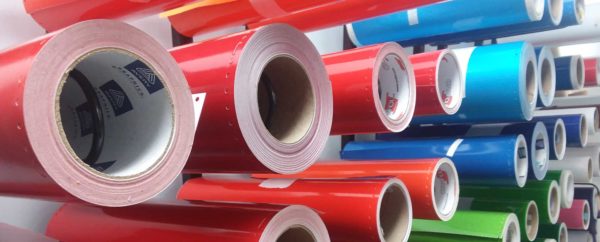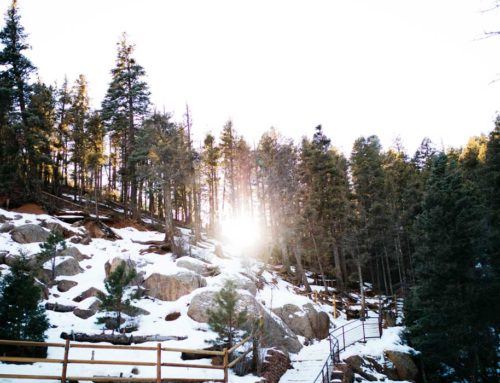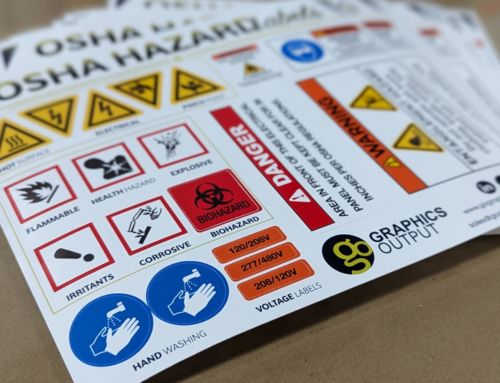Which is better for your application?
Cast or Calendered Vinyl
Vinyl. It’s a word heard often in the graphics industry. Cut vinyl. Rigid vinyl. Roll vinyl. Calendered vinyl. Cast vinyl.
What is vinyl, anyway? “Vinyl” is short for “polyvinyl chloride,” also referred to as PVC, and it is a synthetic thermoplastic material. The core ingredients of all vinyls are the same, but the manufacturing process and additives can differ.
The two most common types of vinyl in the graphics industry are cast and calendered. Both are used for cosmetic decals and labels including product logos, warning decals, and vehicle graphics. Designs can be printed onto the material or simply cut out of either type. While they look extremely similar on the surface, the distinctions between cast and calendered vinyl can greatly affect the durability, pricing, and final appearance of your product.
CAST VINYL
- Widely considered the industry premium
- The most expensive option
- Made by liquifying and blending PVC with a solvent, pouring the mixture into a casting mold, and heating to a high temperature. This produces a thin gauge film, usually 1 to 2 mil thick. The mold determines the vinyl’s sheen (gloss, matte, high-gloss, etc.)
- Durable and flexible, retaining color well
- Available in standard color options
- Likely available in a matte finish, which is an uncommon request (mostly because a gloss finish is easier to keep clean)
- Heat-resistant, which is helpful when applying to multi-level or rounded surfaces (but because the films are so thin, they can be trickier to handle than thicker films)
- The ideal choice for complex or curved surfaces, such as vehicles, where a smooth finished look is expected and when long-term durability (7+ years outdoors) is required

Cast and calendered vinyl can both come in an array of colors, although cast vinyls have a more diverse selection.
CALENDERED VINYL
- Often referred to as intermediate or economy vinyl films
- Made by melting the PVC, plasticizers, and pigment that uses about 50 percent less heat than curing cast vinyls. This mixture is extruded through a die and fed through a series of calendering rollers
- Thicker than cast vinyl–3 to 4 mil is the most common thickness
- Prone to cracking and less conformable, with a tendency to shrink when exposed to heat
- Scratch-resistant
- Easy-to-handle during application
- The ideal choice for flat or simple curved surfaces, low sun exposure, short-term use (up to six years outdoors), prioritizing low-cost
SIDE BY SIDE COMPARISON
So which is best? That depends on your job specifications.
| Cast | Calendered | |
| Flexibility/Conformability | X | |
| Long-Term Use (6+ yrs) | X | |
| Short-Term Use (up to 6 yrs) | X | |
| Heat-Resistance | X | |
| Color Range | X | X |
| Scratch Resistance | X | |
| Ease of Handling | X | |
| Cost | X |
The main differences between cast and calendared vinyls are the production methods and that cast is a thinner, more flexible premium vinyl, while calendared is low cost.
An easy rule of thumb: Use cast for long-term use or curved surfaces and calendared when appearance or cost is most important or surfaces are flat and out of the sun and heat.
Questions about which material is best for you? Get in touch at 260-748-0577 or sales@gographicsoutput.com, and we’ll make sure you get the best product for you.




